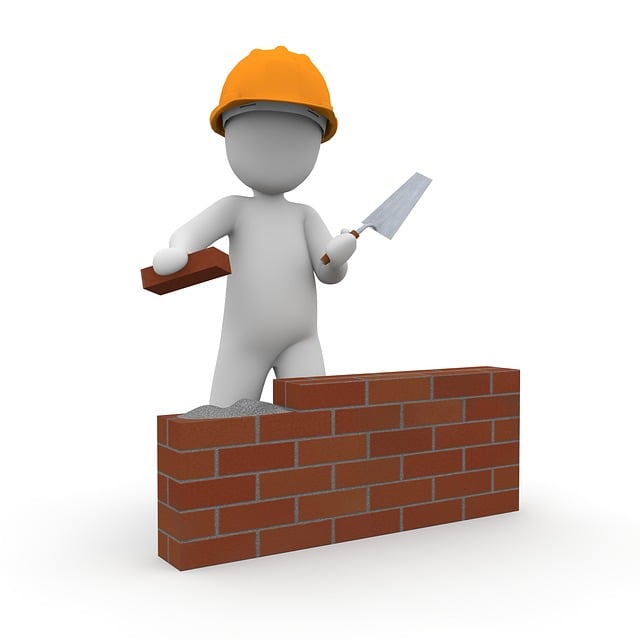Precision underground mapping, leveraging advanced sensors, 3D scanning, and data analysis, creates detailed digital representations of subterranean spaces, enhancing safety, streamlining planning, improving resource allocation, and reducing costs in construction and renovation projects. This game-changer enables better navigation, efficient operations, enhanced communication, and successful outcomes, particularly in urban renewal and heritage conservation efforts.
In the dynamic realms of construction and renovation, precision is paramount. As projects scale and complexity grows, traditional methods often fall short. Enter precision underground mapping, a game-changer that leverages advanced technology for safe, efficient, and accurate subterranean navigation. This article delves into the fundamentals of precision underground mapping, explores its role in modern construction, highlights its manifold benefits, and presents compelling case studies showcasing successful applications.
Understanding Precision Underground Mapping: Unveiling the Basics
Precision underground mapping is a cutting-edge technology that offers unprecedented detail and accuracy for construction and renovation projects. It involves the use of advanced sensors, 3D scanning, and data analysis to create detailed digital representations of underground spaces like never before. By revealing the intricate networks of utilities, voids, and structural elements beneath our feet, precision mapping becomes an indispensable tool for safe and efficient excavation.
This innovative approach goes beyond traditional methods by providing real-time, highly precise data. It helps construction professionals avoid critical errors, such as striking buried pipes or cables, and minimizes the risk of costly delays or safety hazards. With precision underground mapping, projects can be planned with greater confidence, ensuring successful outcomes and smoother operations throughout the construction or renovation process.
The Role of Technology in Construction and Renovation Projects
In today’s digital era, technology plays a pivotal role in enhancing the efficiency and accuracy of construction and renovation projects. One game-changer is precision underground mapping, which involves utilizing advanced techniques to create detailed 3D models of subterranean areas. This innovative approach allows professionals to navigate complex underground landscapes with ease, ensuring every aspect of a project is meticulously planned and executed. By combining GPS technology, ground-penetrating radar, and laser scanning, precision underground mapping provides an in-depth understanding of underground infrastructure, utilities, and potential hazards, thereby revolutionizing the way construction teams operate.
Furthermore, this technology ensures better resource allocation and risk management. With precise knowledge of underground elements, construction workers can avoid costly mistakes, reduce project delays, and foster a safer working environment. Precision mapping also facilitates effective communication among various stakeholders, from architects and engineers to contractors and local authorities, ensuring everyone is aligned with the project’s progress and any potential challenges. As a result, construction and renovation projects become more efficient, environmentally conscious, and successful in achieving their goals.
Benefits of Implementing Precision Techniques for Safe and Efficient Operations
Implementing precision techniques, such as precision underground mapping, offers a multitude of benefits for construction and renovation projects. One of the key advantages is enhanced safety. With accurate mapping, workers can navigate complex underground spaces with confidence, reducing the risk of accidents and injuries associated with unfamiliar territories. This is particularly crucial in urban areas where construction projects often involve working beneath existing infrastructure without disrupting surface activities.
Moreover, precision techniques significantly improve efficiency. Accurate maps enable project managers to plan every step more effectively, from material logistics to workforce deployment. This level of detail allows for better resource allocation and reduced waste, leading to cost savings and faster completion times. In today’s competitive market, where clients demand high-quality results within stringent timelines, precision underground mapping becomes a game-changer, ensuring construction and renovation projects are completed safely, efficiently, and on schedule.
Case Studies: Successful Applications of Precision Underground Mapping
Precision underground mapping has proven its worth in numerous construction and renovation projects, offering a powerful tool for navigating complex subterranean environments. Case studies across various sectors highlight its successful applications. For instance, in urban renewal projects, detailed maps created by precision underground techniques have aided in safe and efficient removal of existing infrastructure while planning new developments. This is particularly crucial in densely populated areas where accurate knowledge of underground utilities and structures is essential to avoid costly damage and disruptions.
Additionally, these mapping technologies have been invaluable in heritage conservation efforts. By meticulously documenting the layout of historical buildings’ foundations and utility systems, precision underground mapping enables renovators to respect the structural integrity of old structures while incorporating modern updates. This balance between preservation and progress ensures that renovation projects not only maintain the aesthetic value of historic sites but also comply with safety regulations, ultimately fostering sustainable development.
Precision underground mapping has emerged as a game-changer in the construction and renovation industry, offering safer and more efficient operations. By leveraging advanced technology, professionals can now navigate complex underground spaces with ease, ensuring projects are completed on time and within budget. The benefits of precision techniques are clear, from minimizing disruptions to enhancing overall project quality. As these technologies continue to evolve, we can expect even more innovative applications, revolutionizing the way we approach underground construction and renovation projects.
